“If it wasn't for HPA, I don't think I would have ever finished this myself. The wiring alone was enough to scrap the project.”
This week’s featured build is straight out of left field: Ryan Paige’s 1973 Triumph Spitfire — with a twist.
It's a serious build! And one of the biggest motivators for Ryan was to test his own skills and abilities. He wanted the project to be as DIY as possible — and for more reasons than just saving money: “The wiring alone was enough to scrap the project. I'm sure I would have had to take it to a professional shop. Taking it to a shop and having it finished would have not only been hard on the wallet, but hard on my ego too.”
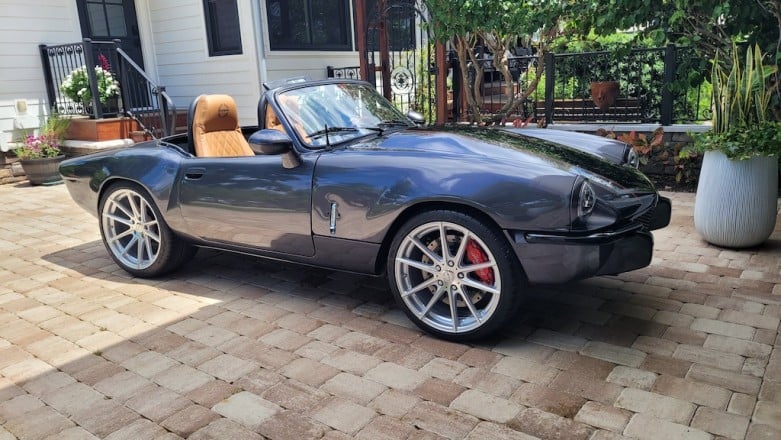
The build started from an unusual place - winning a Halloween costume contest with a homemade astronaut suit. Ryan won some money for his efforts and drove past this rusted-out 1973 Spitfire shortly after. The winnings were burning a hole in his pocket and he couldn’t resist, so he made an offer and drove it home.
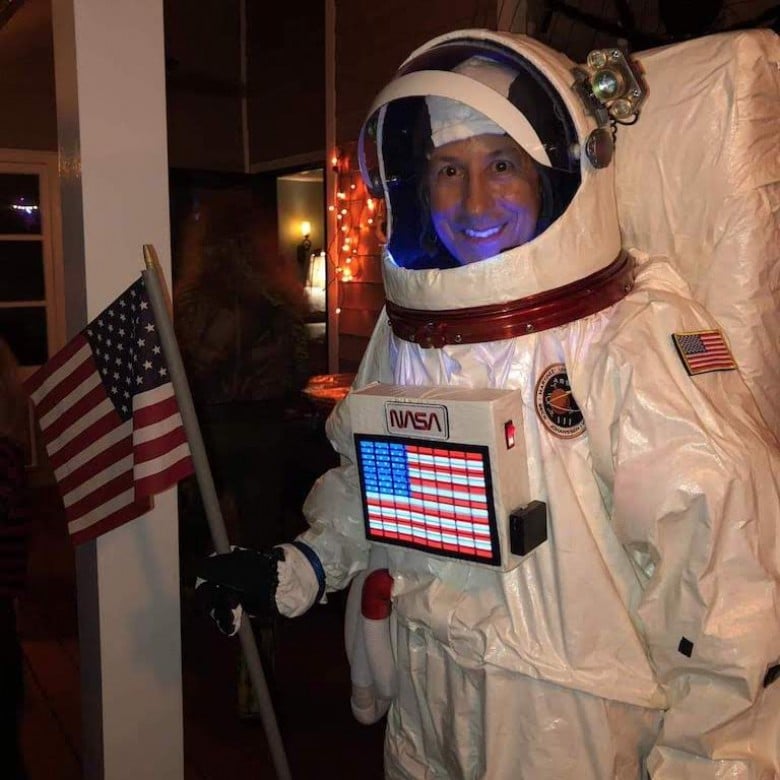
From there, he had to decide between completing a full restoration or going all-out and modifying the small British sports car. Since the car was so rusty and unloved, the parts list for restoration worked out to double the cost of an already fully restored Spitfire. That’s where Ryan started to get creative…
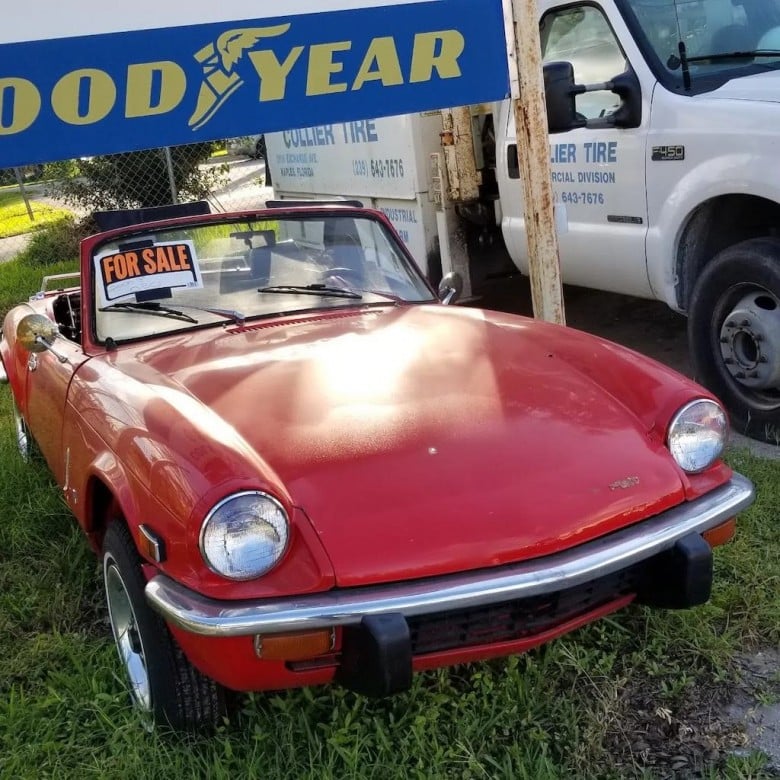
Armed with a measuring tape, he started checking to see if a Nissan VQ35DE engine from a 350z might fit. It turns out the tiny car had enough space to fit the large Japanese 3500cc V6, so he purchased a donor 350z and started stripping it for parts.
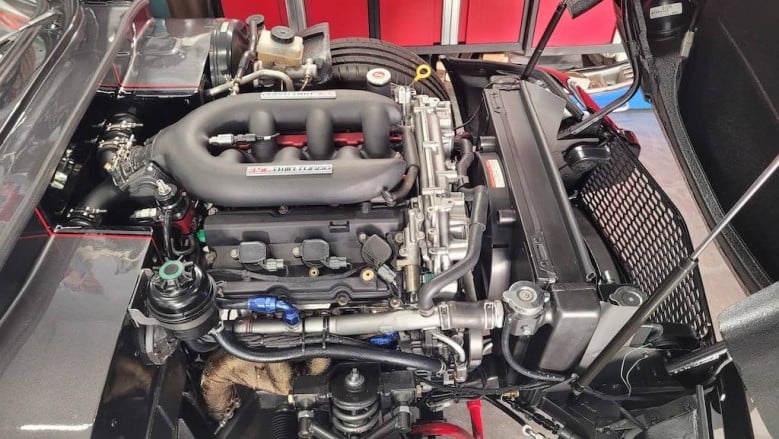
Ryan’s creativity didn’t end there. As he was squeezing the VQ into the Spitfire, the idea of adding boost crept into his mind, so he said “What the hell!” and started the process of remote-mounting twin turbos in the rear of the chassis!

For those unfamiliar with the Spitfire, it's a VERY small car — it makes a Miata look like a giant. Weighing in at ~1600 lb (730 kg) in factory form and with a wheelbase of only 83 inches (2100mm), the idea of fitting a twin-turbo 3.5-litre V6 is nothing short of crazy!
Ryan is very skilled in the garage, with a background as a machinery technician in the U.S. Coastguard and a previous part-time welding business that he ran while working as a firefighter. At this stage, he’s been tinkering with cars for 42 years, so he's entirely capable of doing most things but knew there were a few gaps in his knowledge that needed to be filled. That’s where High Performance Academy came in.
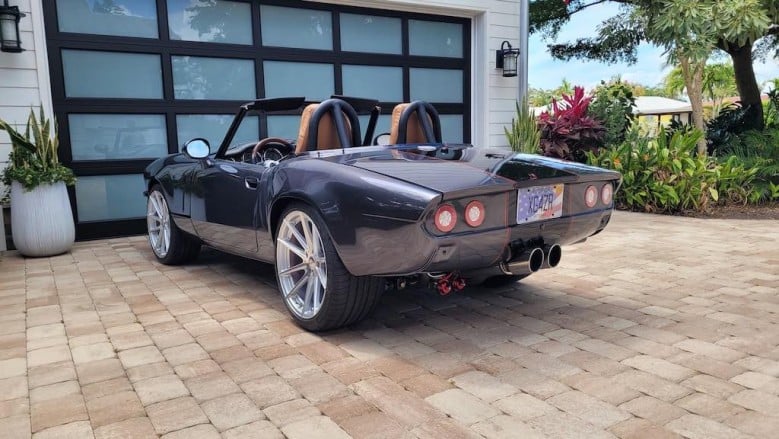
Ryan used a range of HPA courses to fill those gaps, saying, “If it wasn't for HPA, I don't think I would have ever finished this myself. The wiring alone was enough to scrap the project.”
Ryan signed up for an HPA VIP Package — giving him access to every course that HPA currently has, as well as any courses and content that would be released in the future — and started learning. The journey began with the HPA's wiring courses, followed by EFI tuning and eventually, the Suspension Tuning & Optimization course, which he used to set the car up.

Ryan gave this advice if you’re taking on a big project:
“My advice on a build like this is to take your time and enjoy the journey. Also, costs can be very high for a build like this if you don't do the labour yourself. The paint job alone was $18,000. Luckily I was able to work off the paint job labor and only paid for the materials. Also, don't be afraid to scrap an idea and start over if it isn't working like intended.”
Thanks for sharing the build with us, Ryan. It’s a work of art and we’re glad the courses helped you get it past the finish line.
Build specs:
- 1973 Triumph Spitfire 1500
- 2005 350Z 3500cc V6 VQ35DE engine
- Eagle Rods, Wiseco 11:1 pistons, JWT valve springs, Dynosty billet main girdle, MR head bolts, ARP main studs, HKS super fire race plugs, Deatschwerks 1000cc injectors, custom intake manifold
- Modified frame, body, suspension to fit powertrain
- Quaife LSD
- Stock Nissan CD0009 transmission
- QA1 shocks and springs
- 18x8/18x10.5 wheels with Michelin 225/35-18F, 285/30-18R
- Wilwood 6 piston front brakes, 4 piston rear
- Mini Cooper power steering rack
- AEM Infinity 30-7101 ECU
- Dakota Digital HDX gauges
- Kenwood 7-inch touchscreen stereo
- Vintage air (air conditioning)
- Power windows, locks, and push-button start
Want to get eyes on your car? We want to showcase your skills and feature your cars in upcoming featured build articles. Send me an email — info@hpacademy.com. Add a few photos and tell me which courses you’ve used to build it. We’ll be featuring standout builds on hpacademy.com and our social media accounts.
![Ryan's 1973 Triumph Spitfire... With a Twist. [FEATURED BUILD]](/assets/Uploads/blog-posts/c58922e1ab/20240427_075445__FillWzc4MCw0MzBd.jpg)






Comments
No one has commented on this page yet.